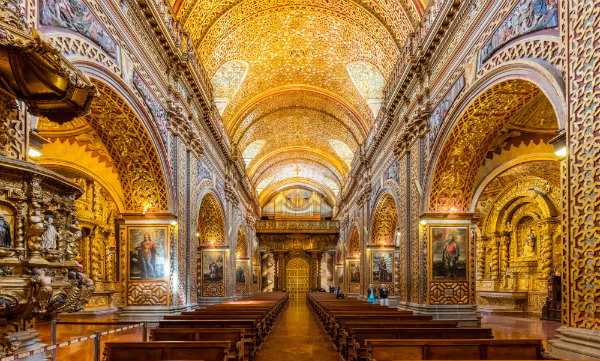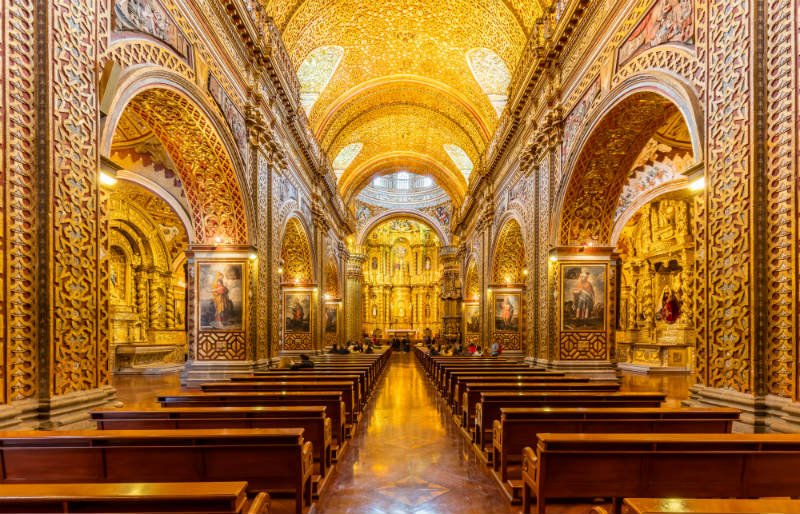Recently, I visited Peru and Ecuador, and I prepared for the trip by reading Kim MacQuarrie’s book, Last Days of the Incas. While I already knew about the Spanish invasion and colonization of Central America, I became fascinated by how 168 conquistadors, led by Francisco Pizarro, seized control of the Incan empire of 10 million, using brute force, advanced battle tactics, i.e., horses, and deceit. The vestiges and lasting impacts of South America’s bloody and oppressive history are well documented, particularly in the churches throughout the region.
La Compañia de Jesus, located in Quito’s historical center, is a dazzling and mind-blowing testament to the Spanish conquerors’ obsession with gold and religious dominance. The entire interior is covered in gold leaf—4 tons of it! Their desire for the precious metal had everything to do with accumulating wealth for themselves as well as colonizing and controlling access to the rich lands. As MacQuarrie says the conquistadors were “entrepreneurs with guns.” For the Incans, gold was considered sacred but it had no monetary value like it did for the Spanish.
The Jesuits broke ground on the church in 1605 and it was completed 160 years later in 1765. It’s a spectacular example of baroque architecture, craftsmanship and Moorish design influences. It’s an overwhelming sight, especially when you think about its history and what it ultimately “cost” the indigenous culture to help build it.
Photos: Wikimedia Commons



Leave a Reply